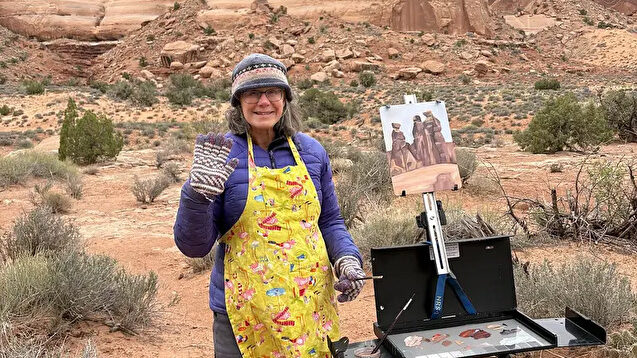Some information may be outdated.
Avalanches aren’t freak occurrences, said Eric Trenbeath, a Moab avalanche forecaster at the Utah Avalanche Center. An avalanche has to be triggered by something—or someone—to set off on its deadly path. Avalanches can be caused by choices made by backcountry users, Trenbeath said, sometimes with fatal results. Since 1991, there have been six avalanche fatalities in the La Sal Mountains.
December 6 marks the start of Avalanche Awareness Week, and the Utah Avalanche Center, in conjunction with the U.S. Forest Service, will host its annual “Know Before You Go” avalanche awareness presentation on Thursday, Dec. 9 at the Moab Arts and Recreation Center.
The presentation covers the basics of recognizing avalanche terrain, signs of instability within the snowpack, and weather factors that contribute to avalanche danger. It will also go over what gear backcountry users and travelers should carry with them, including an avalanche rescue beacon, probe and shovel.
“It’s a gateway for backcountry users who want to learn more about avalanches,” Trenbeath said. “There’s quite a bit involved with it.”
He hopes backcountry users who attend—the skiers, snowmobilers, snowshoers, and really anyone who wants to go into mountain terrain in the winter—will be enticed to take a more advanced class after this introduction. Trenbeath’s goal isn’t to scare people away from the backcountry, but rather get them excited to go out safely.
The Utah Avalanche Center, which aims to provide statewide avalanche forecasting, awareness and education, has been doing an annual presentation in Moab for over 10 years.
While people may not think of Moab as a backcountry destination in winter, especially with the Colorado mountain ranges within a day’s drive, every year there are new backcountry users in the La Sals and growing interest in the area. From 2013 to 2019, attendance at the Moab avalanche awareness event doubled.
“There seems to be a need and desire, and more and more new people are coming out all the time,” Trenbeath said.
Once the snow starts, avalanche conditions will be updated daily on the Utah Avalanche Center’s website at www.utahavalanchecenter.org. Avalanche dangers, such as wind and snowfall, can change within 24 hours.
Long-term conditions for avalanche danger are the formation of what avalanche forecasters call “persistent weak layers.” When there’s an early-season snowfall, and then there’s no snow for a long time, the shallow snow sits on the ground and weakens, turning into a “sugary base” that makes an unstable base layer for future snow loads to land on, Trenbeath said. That’s what’s happening this year in the La Sals, in part due to the “La Niña” climate pattern that will create a drier and warmer winter.
According to the Utah Avalanche Center, in October, over two feet of snow fell in the La Sals, but mostly dry conditions have persisted since then. The range typically has a shallow and weak “continental snowpack” that’s conducive to the formation of weak layers, Trenbeath said.
“It’s looking like we’re going to be plagued with this weak layer underneath for most of the season,” Trenbeath said.
The late November forecast for the La Sals said that conditions are “generally too thin for over snow travel” meaning triggering an avalanche is unlikely, but not impossible.
“A triggered avalanche would likely be small, but could potentially knock you down and send you crashing into rocks. If you find yourself in the high country, be cautious of steep, wind drifted slopes,” the forecast said. In 95% of all avalanche accidents, the avalanche was triggered by the victim or someone in the victim’s party, Trenbeath said.
The “Know Before You Go” presentation will start at 6 p.m. on Thursday, December 9 in the Moab Arts and Recreation Center (111 E 100 N). The event is free to attend.
Appreciate the coverage? Help keep local news alive.
Chip in to support the Moab Sun News.





